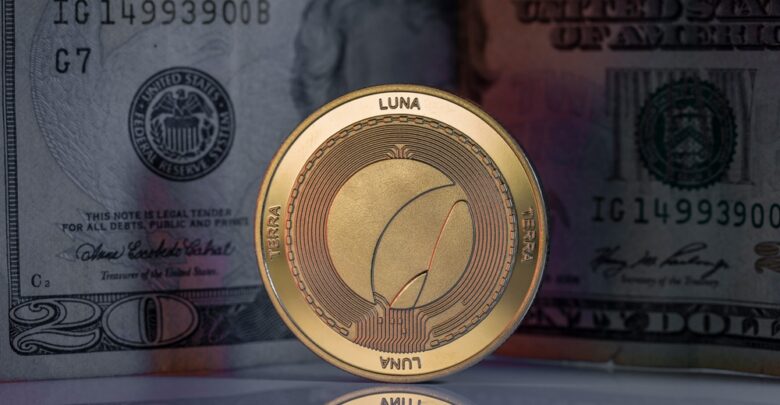Understanding LUNA and LUNC: A Comprehensive Guide to Their Key Differences

The collapse of Terra Luna marked a significant and impactful moment in the cryptocurrency sector, erasing billions in market value. The original blockchain was bifurcated in response to this catastrophic event, creating Terra Luna 2.0. This hard fork resulted in two distinct digital currencies: LUNA and LUNC.
A primary distinction between LUNA and LUNC lies in their respective blockchains. LUNA is the principal digital asset of the newly established Terra Luna 2.0 blockchain, while LUNC, or Luna Classic, serves as the primary cryptocurrency for the original blockchain.
The similarity in the names of these two cryptocurrencies, differentiated only by their final characters – ‘A’ in LUNA and ‘C’ in LUNC – might cause some confusion. This article aims to delineate the differences between LUNA and LUNC in a comprehensive manner.
Differences in Origin
Originally, LUNA was the primary cryptocurrency of the Terra blockchain network. However, the LUNA of 2018 and the current version are distinct entities. Following the collapse of the Terra Luna ecosystem, its founder, Do Kwon, initiated a hard fork of the original blockchain, giving rise to Terra Luna 2.0.
Consequently, the new blockchain cryptocurrency was named LUNA, and the one on the old blockchain was termed Luna Classic or LUNC. Therefore, the origins of LUNA and LUNC vary significantly.
Connection to Stablecoin
LUNC is intricately linked to the sister token USTC through specific conditions. USTC, an algorithmic stablecoin, has a symbiotic relationship with the supply of LUNC tokens, where changes in USTC’s value directly affect LUNC’s supply and vice versa. This interdependence was initially deemed innovative but may have contributed to Terra Luna’s historical downfall.
In contrast, with the hard fork of the old Terra blockchain, the creators aimed to reinvent the platform, ensuring that the new LUNA cryptocurrency severed all connections with the algorithmic stablecoin. Hence, another fundamental difference between LUNA and LUNC is that the former is not anchored to any stablecoin, whereas LUNC maintains its linkage to USTC.
For instance, LUNC’s value escalated following a significant price increase of USTC after an acquisition by Terra Luna Classic Labs, demonstrating the intertwined nature of the two tokens’ values and supplies.
Supply and Market Capitalization Disparities
The total supply and market capitalization represent the most evident disparities between LUNA and LUNC. As of November 2023, LUNA’s total token supply exceeds 1 billion, whereas LUNC has an unlimited supply of approximately 6.83 billion. Regarding market capitalization, LUNA stands at $4.3 million, in stark contrast to LUNC’s $585 million during the same timeframe.
Token Burning Mechanism
As part of the strategy to revive the Terra blockchain, a token-burning mechanism for LUNC tokens was introduced. Initiated in September 2022, this process has successfully eliminated millions of LUNC tokens, aiming to reduce the surplus supply and enhance its value. Conversely, the LUNA digital currency does not incorporate a token-burning mechanism.
The Terra Luna Classic project implemented a 1.2% burn tax on all Luna Classic LUNC on-chain transactions to support this revival. Additionally, the prominent cryptocurrency exchange Binance joined this initiative, contributing to the burning of LUNC tokens by converting the trading fees from LUNC/BUSD and LUNC/USDT trading pairs into burned tokens.
Applications and Functionality of LUNC and LUNA
Initially, the LUNC token was utilized for various purposes, such as facilitating payments for merchants, offering governance rights, and contributing to stablecoin pools. Its focus has shifted towards enhancing decentralization and fortifying community-led governance, especially after its collapse.
Conversely, the LUNA token, associated with the newly developed Terra blockchain, is under active development. Should the efforts to establish a more resilient blockchain succeed, it is anticipated that LUNA will support a range of significant blockchain functionalities. Notably, the development team is placing a strong emphasis on ensuring the stability of the LUNA token.
Development Trajectory and Strategic Plans
Following the collapse of the initial Terra blockchain, Do Kwon put forward various recovery strategies, each achieving different levels of success. A critical step in this process was the creation of a new blockchain via a hard fork, which is now the primary focus of development.
The recently launched Terra Luna 2.0 blockchain, along with its associated LUNA token, has set forth numerous goals and a strategic blueprint aimed at forging a stable and efficient blockchain infrastructure. Meanwhile, the original blockchain needs a more precise direction for future development. The fate of this original blockchain heavily relies on the commitment and active participation of the cryptocurrency community and the development team.
Conclusion
Although LUNA and LUNC share similarities and maintain a connection, they are distinct in several aspects. LUNA serves as the primary cryptocurrency for the Terra 2.0 blockchain, while LUNC remains tied to the original blockchain. This fundamental distinction forms the basis of the differences between the two cryptocurrencies. We hope this article clarifies the nuances differentiating LUNA and LUNC, aiding in their accurate representation and discussion in future conversations about these cryptocurrencies.
Tokenhell produces content exposure for over 5,000 crypto companies and you can be one of them too! Contact at info@tokenhell.com if you have any questions. Cryptocurrencies are highly volatile, conduct your own research before making any investment decisions. Some of the posts on this website are guest posts or paid posts that are not written by Tokenhell authors (namely Crypto Cable , Sponsored Articles and Press Release content) and the views expressed in these types of posts do not reflect the views of this website. Tokenhell is not responsible for the content, accuracy, quality, advertising, products or any other content or banners (ad space) posted on the site. Read full terms and conditions / disclaimer.




